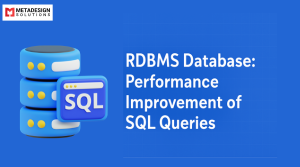Introduction to Logstash
In today’s data-driven world, the need for efficient and scalable log management is growing rapidly. Logs are a crucial part of system administration, application development, and network monitoring as they provide valuable insights into the health, performance, and security of a system. However, as organizations scale and generate massive volumes of log data, managing and parsing these logs becomes a challenging task.
This is where Logstash comes into play. It is a powerful tool developed by Elastic, the same company behind Elasticsearch and Kibana (collectively known as the Elastic Stack). Logstash is designed to collect, parse, filter, and transport log data from multiple sources, making it easier to manage and analyze logs in real-time. By using Logstash, logs are transformed into structured data that can be indexed in Elasticsearch, enabling powerful search and visualization capabilities.
In this blog, we will dive deep into how Logstash is used to parse logs, its components, configuration syntax, and practical examples. By the end of this guide, you will have a solid understanding of how to set up and use Logstash for parsing various types of logs.
What is Logstash?
Logstash is an open-source data processing pipeline that allows you to collect, transform, and forward log data from various sources to different destinations. It excels at handling large volumes of unstructured log data, making it ideal for use cases where logs need to be parsed, processed, and stored efficiently.
Logstash operates in a pipeline architecture, where data flows through three core stages: Input, Filter, and Output. These stages process the log data step by step, with each stage applying specific transformations or actions to the data. The data is collected from input sources, processed according to defined transformations (such as parsing or filtering), and then sent to output destinations.
The main purpose of Logstash is to make log data more structured, thus enabling better search, analysis, and visualization. It supports numerous log formats and can handle a wide variety of input sources, such as log files, network protocols, and external services.
Key features of Logstash include:
- Real-time processing: Logstash processes logs in real-time, which allows for live monitoring and troubleshooting.
- Pluggable architecture: Logstash is highly extensible, with hundreds of plugins available for different input, output, and filter types.
- Integration with Elastic Stack: Logstash integrates seamlessly with Elasticsearch for storing and querying logs and Kibana for visualizing them.
By parsing raw, unstructured logs into structured data, Logstash plays a vital role in modern log management solutions.
Unlock the Power of Real-Time Log Parsing
Schedule a meeting to explore our Logstash integration services.
Why Use Logstash for Log Parsing?
Logstash is widely used for log parsing because of its flexibility and ease of integration with other parts of the Elastic Stack. Here are some reasons why you should consider using Logstash for log parsing:
– Centralized Log Management
With Logstash, you can collect logs from multiple sources (e.g., servers, applications, network devices) and centralize them into a single pipeline. This centralization simplifies log management, making it easier to monitor and analyze logs from diverse environments.
– Real-Time Log Processing
Logstash excels at processing logs in real-time, which is crucial for detecting issues as they occur. You can configure it to process logs as soon as they are generated, allowing you to monitor systems for errors, security breaches, and performance bottlenecks in real time.
– Handling Unstructured Data
Logs are often unstructured or semi-structured, containing raw text without a predefined format. Logstash comes with powerful filters like Grok that allow you to extract meaningful fields from unstructured data. This makes it easy to transform raw logs into structured data, such as extracting IP addresses, timestamps, URLs, and error codes from logs.
– Integration with Elasticsearch and Kibana
Since Logstash is part of the Elastic Stack, it integrates seamlessly with Elasticsearch for indexing and storing logs, and Kibana for visualizing them. Once logs are parsed and indexed by Elasticsearch, you can use Kibana to search, analyze, and visualize the data, making it easier to derive insights from your logs.
– Extensibility and Flexibility
Logstash is highly extensible, with numerous plugins available for different types of inputs, filters, and outputs. Whether you need to collect logs from network devices, parse JSON logs, or enrich logs with GeoIP information, Logstash can handle it with ease.
By using Logstash for log parsing, you can efficiently process and transform logs into structured data, enabling faster troubleshooting and better monitoring of your systems.
Logstash Components
Logstash consists of three main components: Input, Filter, and Output. These components work together to process and forward logs to their final destination. Let’s take a closer look at each of these components:
– Input
The input component is responsible for collecting data from various sources. Logstash can gather data from a variety of inputs, such as files, network protocols, and external services. Some common input plugins include:
- File Input: Reads log files from disk.
- Syslog Input: Collects logs from network devices or servers using the Syslog protocol.
- Beats Input: Collects logs from Beats agents (like Filebeat) installed on remote servers.
- TCP/UDP Input: Reads log data from network sockets over TCP or UDP.
Each input plugin has different configuration options, allowing you to specify the log sources, file paths, network ports, and other parameters.
– Filter
After collecting data, the filter component processes the logs using various filters. Filters are used to parse, transform, and modify log data. Logstash provides several built-in filters that can be applied to data, such as:
- Grok: A pattern-matching filter that extracts fields from unstructured log data.
- Date: A filter that parses timestamps and converts them into a consistent format.
- Mutate: A filter that allows you to modify log data, such as renaming fields or removing unnecessary ones.
- GeoIP: Enriches logs with geographical information based on IP addresses.
The Grok filter, for example, is particularly useful for parsing unstructured logs like Apache or Nginx logs. It uses regular expressions (regex patterns) to match specific parts of a log entry and extract key data fields such as client IP, request method, and response status code.
– Output
Once the logs are processed, the output component sends the transformed data to a destination. The most common destination for Logstash is Elasticsearch, where logs are indexed for search and analytics. However, Logstash supports various output destinations, including:
- Elasticsearch: Sends parsed logs to an Elasticsearch cluster for indexing and storage.
- File: Writes logs to a local or remote file.
- Kafka: Sends logs to Apache Kafka for further processing or real-time streaming.
- Email: Sends email notifications based on log data.
The output configuration determines where the parsed logs are sent and how they are stored.
Logstash Configuration Syntax
Logstash uses a simple configuration file to define how logs are processed. The configuration is divided into three main sections: Input, Filter, and Output. Each section contains specific parameters and settings that control how data is collected, processed, and sent to its destination.
Here’s an example of a basic Logstash configuration file:
input {
file {
path => "/var/log/*.log"
start_position => "beginning"
}
}
filter {
grok {
match => { "message" => "%{COMBINEDAPACHELOG}" }
}
date {
match => ["timestamp", "dd/MMM/yyyy:HH:mm:ss Z"]
}
}
output {
elasticsearch {
hosts => ["http://localhost:9200"]
index => "apache-logs-%{+YYYY.MM.dd}"
}
}
Explanation of the configuration:
- Input: The file input plugin reads logs from the /var/log/*.log file path.
- Filter: The grok filter parses Apache logs using the COMBINEDAPACHELOG pattern, and the date filter parses the timestamp.
- Output: The parsed logs are sent to an Elasticsearch instance running locally (at http://localhost:9200) and stored in an index with the name apache-logs-YYYY.MM.dd.
This configuration file is flexible and can be modified to suit different log formats, input sources, and output destinations.
How Logstash Processes Logs
Logstash processes logs in a sequence of stages:
- Ingestion: The logs are collected using input plugins. Logstash can collect logs from various sources, such as files, network devices, or external services.
- Parsing and Transformation: The collected logs are processed using filters. Filters like grok, mutate, and date are applied to transform unstructured data into structured fields, such as extracting the client IP, timestamp, and request method from a log entry.
- Output: After the logs are parsed, they are sent to the output destinations, such as Elasticsearch or Kafka, for storage and further analysis.
Common Use Cases for Logstash
Logstash is extremely versatile and can be used in many scenarios where log data needs to be parsed, processed, and forwarded for further analysis. Some of the most common use cases for Logstash include:
– Centralized Log Collection and Aggregation
In modern infrastructure environments, log data is generated by a wide range of sources such as web servers, database systems, network devices, and applications. Managing and analyzing these logs separately is inefficient and can lead to missed insights. Logstash solves this problem by centralizing log collection, ensuring that logs from different sources are collected into a single pipeline for further processing.
Example: A company running multiple web servers and application instances can use Logstash to collect logs from all these sources into a centralized Elasticsearch cluster. This enables IT teams to monitor the health of the application, track user activity, and troubleshoot errors in a unified view.
– Real-Time Log Monitoring and Alerts
Logstash processes logs in real-time, making it an ideal tool for monitoring systems and generating alerts based on log data. By parsing logs and applying filters, Logstash can detect specific events, errors, or anomalies and trigger alerts when certain conditions are met.
Example: Suppose you are monitoring a web application and want to receive an alert whenever a specific error occurs in the log files, such as a “404 Not Found” or “500 Internal Server Error”. You can configure Logstash to filter logs for these specific status codes and send an email or Slack notification to the relevant team whenever these events occur.
– Log Enrichment
Log enrichment is the process of adding additional information to logs to make them more valuable and insightful. Logstash supports various filters that can enrich logs by adding data such as geographical information, user agent details, or security threat intelligence.
Example: Consider a scenario where you are collecting access logs from web servers and want to include the geographical location of the IP addresses requesting resources. Logstash’s GeoIP filter can enrich the logs with the geographical location of each IP address, making it easier to analyze traffic patterns and identify potential security threats.
Advanced Features of Logstash
Logstash is not just a simple log parser; it offers many advanced features that enhance its functionality and make it adaptable to complex use cases.
– Pipeline-to-Pipeline Communication
Logstash allows you to chain multiple pipelines together, enabling more complex data transformations and processing. You can send data from one pipeline to another, allowing for better separation of concerns and improved scalability in large-scale logging environments.
Example: In a large-scale environment, you might have one pipeline for collecting logs and another for processing and filtering the logs. These pipelines can communicate with each other, making it easier to scale and manage the log processing workload.
– Conditional Logic in Filters
Logstash supports conditional logic in filter plugins, allowing you to apply different filters based on the content of the logs. This enables more sophisticated log processing, where certain actions or transformations are only applied under specific circumstances.
Example: If logs from a particular application contain a certain error message, you can configure Logstash to apply a specific filter to these logs to extract detailed information about the error. Similarly, if logs contain an IP address from an unknown region, Logstash can enrich them with additional information, such as threat intelligence.
– Custom Plugins
Logstash offers the flexibility to develop custom plugins for both inputs, filters, and outputs. If the built-in plugins do not meet your requirements, you can create your own custom plugin to handle specific use cases, making Logstash even more adaptable.
Example: If you need to extract data from a proprietary log format or send logs to a custom storage system, you can create custom input and output plugins to integrate with your existing infrastructure.
– Data Aggregation
Logstash can aggregate log data to create summarized statistics, which can be particularly useful for generating reports or visualizations. By using filters like aggregate, you can accumulate data over time and generate metrics such as average response times, request counts, or error rates.
Example: Aggregating logs to calculate the average response time for a web application over a 24-hour period can help you monitor application performance and identify potential bottlenecks.
Best Practices for Using Logstash
While Logstash is a powerful tool for log parsing and transformation, ensuring that it is set up and configured correctly is essential for optimal performance. Below are some best practices to follow when using Logstash:
– Ensure Proper Resource Allocation
Logstash can be resource-intensive, especially when processing large volumes of log data. It is important to allocate sufficient CPU, memory, and disk resources to ensure that Logstash runs smoothly. You should also monitor the Logstash process to identify any potential bottlenecks, such as excessive memory usage or slow processing times.
– Use Efficient Filters
Filters like Grok are powerful but can be computationally expensive, especially when used with complex patterns. It is essential to use efficient filter patterns and avoid unnecessary filters to minimize processing time. You can also combine multiple filters into one where possible to improve performance.
– Optimize Elasticsearch Indexing
When sending logs to Elasticsearch, it is important to configure indexing appropriately to ensure efficient storage and search performance. For example, avoid using too many fields in the index or creating large, unnecessary indices. Instead, make use of index templates and mappings to control how logs are indexed in Elasticsearch.
– Monitor and Scale Logstash
As your log data grows, you may need to scale Logstash to handle increasing traffic. This can be done by horizontally scaling the Logstash pipeline, deploying multiple instances to process logs concurrently. Additionally, monitor Logstash’s performance using tools such as Elasticsearch Monitoring and Kibana to identify any performance issues and adjust your configuration accordingly.
Conclusion
Logstash is an essential tool for processing, filtering, and transforming log data, providing significant value in modern log management and monitoring systems. By using Logstash, you can centralize log collection, enrich logs with additional data, and send them to Elasticsearch for powerful search and visualization capabilities.
Related Hashtags:
#Logstash #LogParsing #LogManagement #DataParsing #ELKStack #LogAnalysis #LogstashTutorial #LogstashUsage #LogstashServices #LogstashCompany #HireLogstashDeveloper #DataProcessing #LogMonitoring #LogstashIntegration #LogstashPipeline #LogstashFeatures #LogstashSupport #LoggingSolutions #LogstashForLogs #LogstashConsulting



